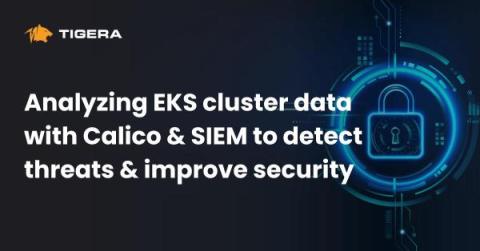Security | Threat Detection | Cyberattacks | DevSecOps | Compliance
Latest News
How to Secure a REST API
Analyzing EKS cluster data with Calico and SIEM to detect threats and improve security
Security Information and Event Management (SIEM) is essential for enterprise organizations because it provides the tools and capabilities needed to effectively monitor, detect, respond to, and mitigate cybersecurity threats, while also supporting compliance and overall security strategy enhancement.
Cloud SIEM: tips and best practices
Data compliance in public sector: Making data secure and accessible isn't mutually exclusive
Understanding TLS for REST Services
Cyber attackers hit the jackpot: learn why casinos aren't the only ones vulnerable
Leveling up Elastic Cloud security: Introduction to role-based access control
Breaking Down the Differences Between Entry-Level, Mid, and Senior SOC Analysts
The Security Operations Center (SOC) plays a critical role in reducing cyber risk. Successful management of a SOC, however, is a team effort that requires the combined expertise of entry-level (tier 1), mid-level (tier 2), and senior-level (tier 3) analysts. In this piece, we break down the key differences of the three analyst tiers, offer tips for each tier, and provide universal advice to help you succeed in your SOC career.
AWS Security Data Lake and the Devo Platform
In the ever-evolving cybersecurity landscape, the need for a comprehensive security data lake (SDL) has become important to some enterprises. Organizations face multi-vector threats that demand extensive data analysis to effectively counter them.











